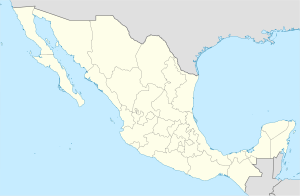La Trinitaria, Chiapas facts for kids
Quick facts for kids
La Trinitaria
|
|
|---|---|

Municipality of La Trinitaria in Chiapas
|
|
| Country | |
| State | Chiapas |
| Area | |
| • Total | 710.7 sq mi (1,840.7 km2) |
| Population
(2010)
|
|
| • Total | 72,769 |
La Trinitaria is a town and a municipality in the southern part of Mexico. It is located in the state of Chiapas. This area is known for its beautiful landscapes and its important role in the region.
About La Trinitaria
La Trinitaria is both a town and a larger administrative area called a municipality. Think of a municipality like a county or a district. It includes the main town and many smaller villages and communities around it.
Size and Population
The municipality of La Trinitaria covers a large area. It is about 1,840.7 square kilometers (about 710 square miles). This is a big space, similar to many large cities.
In 2010, the total population of the municipality was around 72,769 people. This number grew from 59,686 people in 2005. The main town of La Trinitaria had about 9,042 residents in 2010.
Communities in the Municipality
Besides the main town, the municipality has many smaller communities. In 2010, there were 585 of these smaller places. Some of the largest communities in the municipality include:
- Lázaro Cárdenas (population 3,699 in 2010)
- José María Morelos (population 2,601 in 2010)
- La Esperanza (population 2,549 in 2010)
- El Porvenir Agrarista (population 2,468 in 2010)
- Miguel Hidalgo (population 2,428 in 2010)
- Rodulfo Figueroa (population 2,321 in 2010)
- Las Delicias (population 2,121 in 2010)
- La Gloria (population 1,874 in 2010)
- Álvaro Obregón (population 1,790 in 2010)
- Tziscao (population 1,562 in 2010)
- El Progreso (population 1,399 in 2010)
- Santa Rita (population 1,389 in 2010)
- Nueva Libertad (El Colorado) (population 1,182 in 2010)
- Chihuahua (population 1,088 in 2010)
- Unión Juárez (population 1,050 in 2010)
Some of these communities are considered urban, meaning they are more like small towns. Others are rural, which means they are smaller villages in the countryside.
See also
 In Spanish: La Trinitaria (Chiapas) para niños
In Spanish: La Trinitaria (Chiapas) para niños


